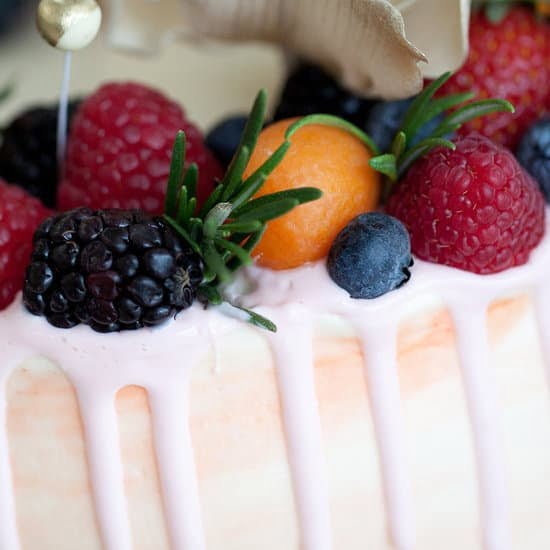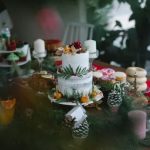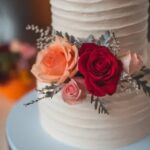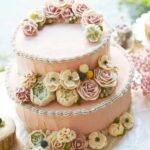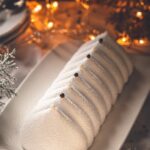Are you wondering how to make cake decorating icing from scratch? Look no further. In this article, we will explore the essential components of creating homemade icing for cake decoration and provide you with a step-by-step guide to achieve the perfect consistency and flavor. Whether you’re a beginner or an experienced baker, understanding the basics of cake decorating icing is crucial for elevating your baking skills.
Cake decorating icing is a versatile and essential component of creating beautiful and delicious cakes. It serves as the foundation for intricate designs, adds sweetness, and enhances the overall aesthetic appeal of your baked creations. By using homemade icing for cake decorating, you can customize the flavor, texture, and color to suit your preferences, ultimately elevating your baking experience.
In this section, we will define what cake decorating icing is and discuss the importance of using homemade icing. Understanding these basics will not only enhance your knowledge but also empower you to create personalized and delectable cakes that will impress your friends and family. So let’s dive into the wonderful world of cake decorating icing.
The Essential Ingredients for Homemade Cake Decorating Icing
When it comes to making cake decorating icing from scratch, using the right ingredients is crucial for achieving the perfect flavor and texture. The key ingredients for homemade icing typically include confectioner’s sugar (also known as powdered sugar), unsalted butter, vanilla extract, and milk or heavy cream.
Confectioner’s sugar is the primary ingredient in most cake decorating icings, providing sweetness and a smooth consistency. When selecting confectioner’s sugar, it’s advisable to sift it before using to ensure that there are no lumps in the final icing.
Unsalted butter adds richness and a creamy texture to the icing. It’s important to use unsalted butter so that you can control the amount of salt in the icing. Additionally, using quality vanilla extract will enhance the flavor of the icing, while milk or heavy cream can be added to adjust the consistency based on personal preference.
In addition to these main ingredients, some recipes may call for alternative flavorings or add-ins such as cocoa powder for chocolate icing or citrus zest for a refreshing twist. Overall, using high-quality ingredients is essential for achieving delicious homemade cake decorating icing.
| Ingredient | Importance |
|---|---|
| Confectioner’s Sugar | Provides sweetness and smooth consistency |
| Unsalted Butter | Adds richness and creamy texture |
| Vanilla Extract | Enhances flavor of the icing |
Step-by-Step Guide
Cake decorating icing is an essential component of any beautifully decorated cake. Making icing from scratch gives you the freedom to control the flavor, consistency, and overall quality of your baked goods. Whether you’re a seasoned baker or a novice in the kitchen, learning how to make cake decorating icing from scratch is a valuable skill that can elevate your baking game.
To make cake decorating icing from scratch, you will need a few essential ingredients that form the base of most homemade icings. These typically include confectioners’ sugar (also known as powdered sugar), unsalted butter or vegetable shortening, vanilla extract, and milk or heavy cream. By using high-quality ingredients, you can ensure that your icing not only tastes delicious but also holds up well for decorating purposes.
One of the most popular types of cake decorating icing is buttercream. This classic frosting is versatile, easy to work with, and can be flavored and colored in countless ways. To make a simple buttercream icing from scratch, start by creaming together softened butter and confectioners’ sugar until light and fluffy. Then, gradually add vanilla extract and small amounts of milk or cream until you achieve your desired consistency.
Using the right technique to create your homemade icing is crucial for achieving the perfect texture and flavor. It’s important to follow precise measurements when making cake decorating icing from scratch to ensure that it is neither too thick nor too runny. Additionally, incorporating air into the mixture through whipping or beating will result in a smooth and creamy texture that is ideal for spreading or piping onto cakes.
| Ingredient | Description |
|---|---|
| Confectioners’ sugar | Also known as powdered sugar; provides sweetness and structure |
| Unsalted butter or vegetable shortening | Creates a rich, creamy base for the icing |
| Vanilla extract | Adds flavor to the icing |
| Milk or heavy cream | Adjusts the consistency of the icing while adding richness |
Different Types of Cake Decorating Icing
Buttercream
One of the most popular and versatile types of cake decorating icing is buttercream. This smooth and creamy icing is made with butter, powdered sugar, and flavorings such as vanilla extract. Buttercream is perfect for creating smooth finishes on cakes and cupcakes, as well as for piping intricate designs. It can also be easily tinted with food coloring to achieve vibrant hues for any type of celebration.
Royal Icing
Royal icing is a hard-drying and glossy icing that is commonly used for intricate detailing on cakes and cookies. Made from powdered sugar, egg whites, and flavoring, royal icing hardens when exposed to air which makes it ideal for creating intricate designs such as flowers, borders, and lettering. Its stiff consistency allows for precise piping work, making it a favorite among professional bakers.
Cream Cheese Icing
Cream cheese icing offers a rich and tangy flavor that pairs perfectly with a variety of baked goods. Made with cream cheese, butter, powdered sugar, and often enhanced with vanilla or lemon zest, this type of icing has a luscious texture that is great for both spreading over cakes or piping onto cupcakes. Cream cheese icing is particularly popular for carrot cakes, red velvet cakes, and cinnamon rolls due to its delicious flavor profile.
When considering how to make cake decorating icing from scratch, exploring the different types mentioned above can provide limitless opportunities for creativity in cake decorating. Each type has its unique characteristics that cater to specific design needs while adding both beauty and flavor to your baked creations.
Tips and Techniques for Decorating Cakes With Homemade Icing
When it comes to cake decorating, the right techniques can make all the difference. Using homemade icing adds a personal touch to your creations and allows for greater customization. Below are some expert tips and techniques for decorating cakes with homemade icing:
- Use the right tools: Invest in high-quality piping bags, tips, and spatulas to achieve professional-looking results.
- Color mixing: Experiment with different food coloring gels to achieve custom shades that complement your cake design.
- Consistency is key: Pay attention to the consistency of your icing – it should be smooth and easy to spread or pipe without being too runny or stiff.
- Piping techniques: Practice various piping techniques such as rosettes, shells, and borders to add beautiful designs to your cakes.
- Layering and textures: Create depth and visual interest by layering different colors and textures of icing on your cakes.
Mastering these tips and techniques will enable you to create stunning cake designs using homemade icing. Whether you’re a beginner or experienced baker, these skills will elevate your cake decorating game and impress anyone who indulges in your delicious creations.
Additionally, don’t be afraid to let your creativity shine through when using homemade icing. Experiment with different patterns, shapes, and designs to add a personalized touch to your cakes. With practice and patience, you’ll soon be able to decorate cakes like a pro using your own custom-made icing.
Troubleshooting Common Icing Issues
Addressing Lumps and Consistency Issues
When making cake decorating icing from scratch, encountering lumps or inconsistent texture can be a common issue. This can often happen if the ingredients are not properly mixed or if the temperature isn’t right.
To address lumps in your icing, one solution is to ensure that your powdered sugar is sifted before adding it to the other ingredients. Additionally, make sure that your butter or shortening is softened but not melted, and gradually add the powdered sugar while mixing to achieve a smooth consistency.
Dealing With Air Bubbles
Air bubbles can also be an issue when making homemade icing for cake decorating. These can cause an uneven finish when applying the icing to a cake. To prevent air bubbles from forming in your icing, try tapping the bowl of prepared icing on the countertop before using it to release any trapped air. You can also use a spatula to gently work out any visible air bubbles in the icing before applying it to your cake.
Preventing Crusting and Drying Out
Another common problem with homemade cake decorating icing is that it can crust over or dry out too quickly, making it difficult to work with. To prevent this issue, consider covering any leftover icing with plastic wrap directly touching its surface before sealing it in an airtight container.
This will help maintain its moisture and prevent crusting. If you notice your icing starting to dry out as you’re working with it, lightly misting it with water can help revive its smoothness and pliability.
By addressing these common issues when making homemade cake decorating icing from scratch, you’ll be better equipped to create beautifully decorated cakes without running into unexpected problems along the way.
Creative Ways to Use Homemade Icing for Cake Decorating
When it comes to cake decorating, homemade icing opens up a world of creative possibilities. Whether you’re a novice baker or an experienced pastry chef, knowing how to make cake decorating icing from scratch can take your creations to the next level. Here are some creative ways to use homemade icing for cake decorating:
Intricate Piping Designs
One of the most popular and versatile ways to use homemade icing for cake decorating is through intricate piping designs. With a piping bag and various tips, you can create beautiful patterns, flowers, borders, and even intricate lace-like designs on your cakes. From classic swirls to elaborate rosettes, the possibilities are endless when it comes to piping with homemade icing.
Ombré Effects and Color Mixing
Homemade icing allows you to experiment with different colors and achieve stunning ombré effects on your cakes. By mixing and blending different shades of icing, you can create visually striking gradients that add depth and dimension to your designs. Whether you’re looking for a soft pastel palette or vibrant rainbow hues, homemade icing gives you the flexibility to customize the colors according to your artistic vision.
Textured and Sculpted Details
Another creative way to use homemade icing for cake decorating is by incorporating textured or sculpted details into your designs. With the right tools and techniques, you can create realistic-looking textures such as wood grain, marble veining, or even sculpted figurines out of icing. These unique elements add a touch of whimsy and sophistication to your cakes, making them stand out as edible works of art.
By mastering the art of making cake decorating icing from scratch and honing your skills in using it creatively, you can elevate your baking endeavors and impress everyone who indulges in your delectable creations. Whether it’s for a special occasion or just a fun baking project at home, the versatility of homemade icing offers endless opportunities for experimentation and innovation in cake decorating.
Conclusion
In conclusion, learning how to make cake decorating icing from scratch can truly elevate your baking skills and take your creations to the next level. By understanding the basics of cake decorating icing and the essential ingredients needed for homemade icing, you can have full control over the flavor and quality of your frosting.
Following a step-by-step guide and exploring different types of icing will allow you to customize your creations according to your preferences and the specific needs of each cake design.
Furthermore, with expert tips and techniques for decorating cakes with homemade icing, you can hone your skills in piping, color mixing, and other advanced decorating methods. Troubleshooting common icing issues will also prepare you to handle any challenges that may arise during the icing-making process. Finally, by getting creative with how you use homemade icing for cake decorating, you can truly showcase your talent and achieve stunning designs that are unique to your personal style.
In essence, making icing from scratch gives you the opportunity to infuse every baked creation with love and attention to detail. So I encourage all readers out there to experiment with creating their own homemade icing for a truly personalized and delicious cake decorating experience. As you continue on this culinary journey, don’t be afraid to let your creativity run wild – after all, there’s nothing quite like seeing your vision come to life in edible form.
Frequently Asked Questions
What Icing Is Best for Decorating Cakes?
The best icing for decorating cakes ultimately depends on the desired outcome. Royal icing is great for intricate details and piping, while buttercream icing is perfect for spreading and creating texture.
How Do You Mix Icing Sugar for Decorations?
To mix icing sugar for decorations, start by sifting the icing sugar to remove any lumps. Then, gradually add a small amount of liquid, such as water or milk, and stir until you reach your desired consistency.
How Do You Make Fake Icing for Decorations?
To make fake icing for decorations, you can use a mixture of powdered sugar and cornstarch to create a similar texture to real icing without the perishability. Add a small amount of water to form a thick paste and use food coloring as needed for decoration purposes.

Welcome to our cake decorating blog! My name is Destiny Flores, and I am the proud owner of a cake decorating business named Cake Karma. Our mission is to provide delicious, beautiful cakes for all occasions. We specialize in creating custom cakes that are tailored specifically to each customer’s individual needs and tastes.

